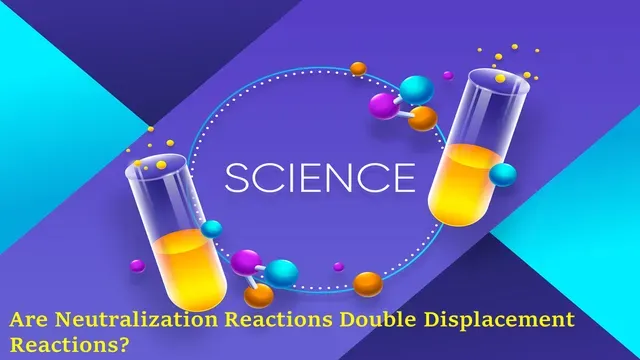Double displacement reactions are reactions in which elements
(ions, atoms) are exchanged between two compounds.
Ex- `2NaOH + CuSO_4 →Cu(OH)_2 + Na_2SO_4`
Sodium hydroxide forms `Na^(+) + OH^(-)` ions
`NaOH →Na^(+) + OH^(-)`
Copper sulphate also ionised in solution
`CuSO_4 → Cu^(2+) + SO_4^(2-)`
Exchange of ions
`Na^(+) + SO_4^(2-) → Na_2SO_4`
`Cu^(2+) + OH^(-) → Cu(OH)_2`
So, in the double displacement reaction, the exchange of ions takes
place and two new products are formed.
Neutralization reactions are the reactions in which reactants
are acid and base. They react to produce salt and water. So, the exchange of ions
between acid and base also takes place that’s why neutralization reactions can
be considered as double displacement reactions.
`NaOH + H_2SO_4 → Na_2SO_4 + H_2O`
Sodium hydroxide ionised in the solution
`NaOH →Na^(+) + OH^(-)`
Sulphuric acid ionised in the solution
`H_2SO_4 → 2H^(+) + SO_4^(2-)`
Exchange of ions
`Na+ + SO_4^(2-) → Na_2SO_4`
`2H^(+) + OH^(-) → H_2O`
So, in the neutralization reaction, an exchange of ions takes place
and two products (salt and water) are
formed.
Conclusion: Yes, all neutralization reactions are double displacement
reactions
Related Topics
1. What happens during a chemical reaction
FAQs
1. Do
neutralization reactions always produce water?
Ans.- Yes, water is always one product during neutralisation
reactions.
2. Do
neutralization reactions always produce salt?
Ans. – Yes, neutralization reactions always produce salt as a product
and it depends on the acid and base used in the reaction.
3. Can the neutralization reaction be reversed?
Ans.- Neutralisation reaction is a chemical change and these
changes cannot be reversed.
4. Can
neutralization reactions be used in daily life?
Ans.- Neutralisation reactions are used in daily life in making antacids,
prevention of tooth decay, treatment of ant sting,s etc

.jpg)

.jpg)

No comments:
Post a Comment